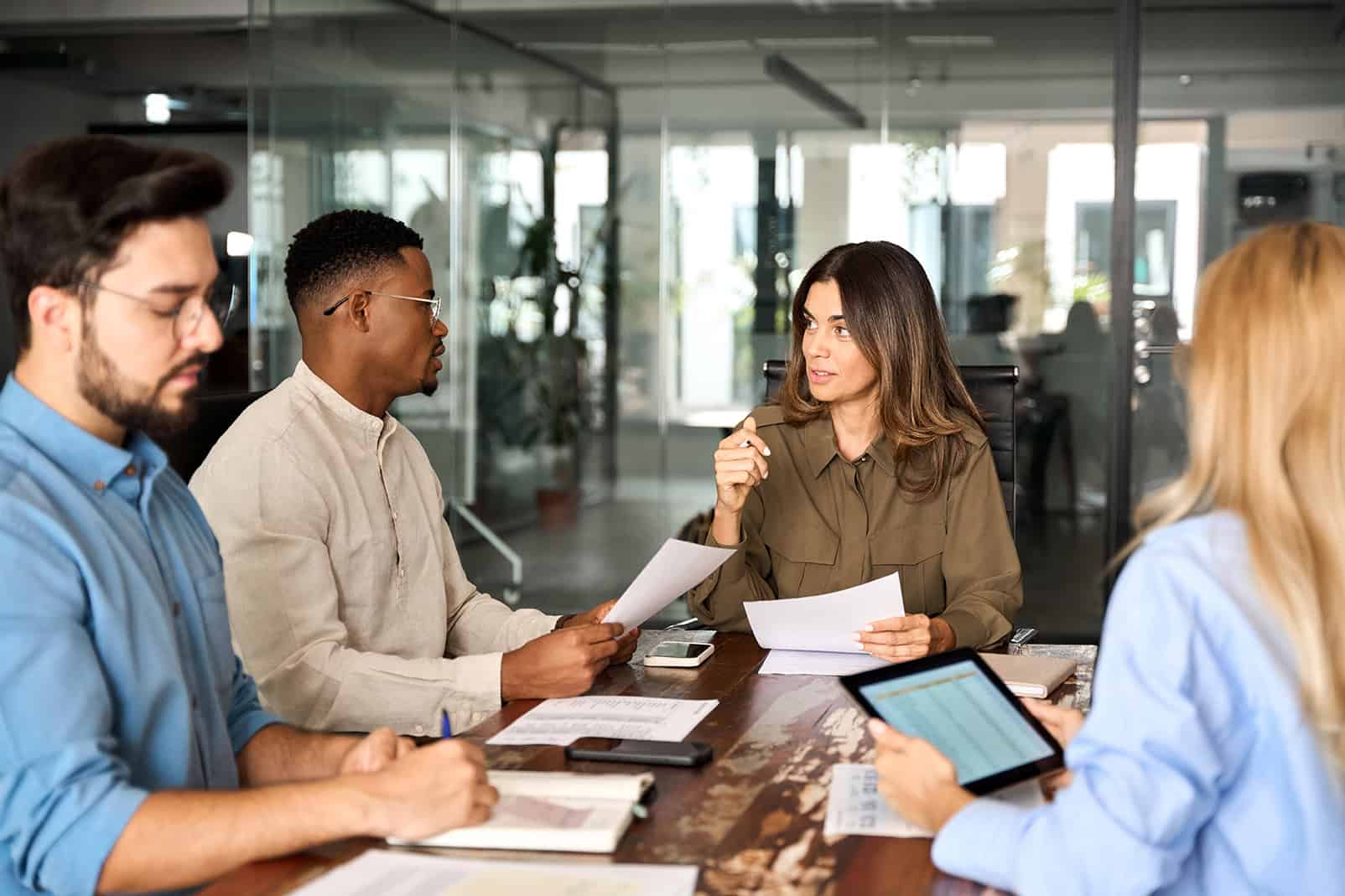
Before the US tariffs on China go into effect this year, discover how to avoid rising supply chain costs, stay ahead of future regulations, and meet sustainability goals across the full ecosystem of supply chain partners.
Businesses across industries are primed for increased supply chain costs after the US announced new tariffs on China to roll out between 2024 and 2026. The tariffs will impact a range of goods, including solar panels, semiconductors, medical supplies, and steel and aluminum products. The electric vehicle (EV) industry faces the most severe hikes, with the tariff rate for EVs quadrupling to reach 100 percent and the rate for EV batteries and battery parts tripling to reach 25 percent.
While the measures are designed to create jobs, curb China’s unfair trade practices, and strengthen the American supply chain, the tariffs may increase supply chain costs and complexity for US businesses—in the targeted sectors and beyond. To help ensure your organization is prepared for the new tariffs, we’ll cover key implications on global supply chains and share a few ways e2open can help you adjust cost-effectively while improving delivery speed and visibility.
Implication #1: You may need to diversify your supply chain to avoid rising costs
As the tariffs go into effect between 2024 and 2026, importing targeted goods will result in increased tariff rates of 25 to 100 percent. You also may see increased costs from suppliers that are subject to the tariffs as they defray the costs to you.
However, the cost implications don’t stop at the targeted industries. As the tariffs put additional strain on US-China relations, Edelman believes China will likely retaliate with tariffs and export controls on strategic sectors, leading to sizable supply chain cost spikes beyond the automotive, clean energy, medical device, and computing industries.
To avoid unnecessary costs, review the full list of targeted imports and determine whether you or your suppliers will pay higher rates. If so, consider diversifying your supply chain by finding suppliers outside of China. Building a regionally balanced supply chain—known as nearshoring—gives you greater flexibility to respond to market changes and nimbly adjust your operations now and in the future.
As you evaluate supplier options, working with a supply chain software company like e2open can streamline efforts to regionalize your partners. We offer an extensive partner network of more than 480,000 manufacturing, logistics, and distribution partners across multiple tiers and every mode of transportation. With access to trusted partners across the full supply chain ecosystem on a single network, e2open can help you connect with and onboard new trading partners in less time.
As you transition partners, you need visibility into upstream and downstream processes to enable seamless integration and compliance. E2open’s suite of Supply Applications enables visibility and collaboration with partners across all tiers of supply and manufacturing on a single platform. Supply forecast and inventory collaboration tools help you proactively ensure raw materials align with capacity and demand. Structured engagement tools streamline due diligence processes, and partner impact assessment capabilities help ensure compliance. You can also take advantage of automated purchase order management tools to simplify the procure-to-pay lifecycle and increase productivity.
You’ll also need to secure key logistics changes to support the shift in supply change routes, such as finding new logistics partners or adjusting carrier methods. The e2open platform integrates a Logistics Visibility solution to provide real-time status of every shipment across all modes and regions to ensure they arrive on time. Uniting all supply networks on one platform improves collaboration with new and existing partners to help you identify and address potential disruptions at the earliest signs of trouble.
Automotive manufacturers will be hit with a combination of new tariffs on EV, EV and non-EV batteries, semiconductors, steel, and aluminum. See how e2open Supply applications can help automakers improve global supplier commitment and productivity via more accurate forecasts.
Implication #2: You may need to adopt an efficient system for anticipating future tariffs
Even once you’ve successfully diversified your supply chain to mitigate the costs of this round of tariffs, more market changes and new regulations are always right around the corner.
To keep pace with the ever-evolving market, business executives often develop a dedicated practice of reading the news, regularly attending industry events and trainings, or relying on their network of suppliers and customers to share trends. However, these practices can involve significant time and effort—and you may still fail to receive key information in time to plan efficiently and ensure your business meets compliance standards.
E2open Global Trade solutions provide everything you need in one place to help quickly react to market changes while reducing supply chain costs. The platform automatically identifies relevant duty, tax, and tariff reduction programs to help you maximize savings and streamline the documentation process, allowing you to easily take advantage of free trade agreements (FTAs). You’ll also have access to the world’s most comprehensive, accurate, and current trade content database to help you stay on top of global market news, maintain regulatory compliance, and reduce the risk of error.
For example, when a Japanese automotive leader set out to accelerate innovation cycles and deliver car models tailored to local European markets, it launched a parts import facility in the UK and began collaborating with a partner in Germany. However, this meant the automaker had to comply with a slate of new regulations and customs as it stored and distributed imported parts and vehicles. Working alongside e2open, the manufacturer implemented a bonded warehouse solution to get end-to-end inventory visibility, ensure customs compliance, and optimize UK warehouse operations. Read more.
Implication #3: Consider seizing opportunities to support your sustainability goals
While they will likely result in increased global supply chain costs, the new tariffs also present opportunities to seek out partners who can help businesses advance environmental, social, and governance (ESG) goals. In fact, that’s one of the tariffs’ intended goals.
Consider the EV industry. The White House estimates that China controls over 80 percent of key segments of the EV battery supply chain, including upstream legs like critical minerals mining, processing, and refining. This limits visibility into manufacturing practices and makes it harder to meet US clean energy goals. By imposing dramatic tariffs on EVs and EV batteries imported from China, the White House hopes to incentivize working with domestic partners that are committed to clean energy practices. Similarly, the steel and aluminum tariffs are designed to combat artificially low-priced Chinese steel and aluminum products, which the White House says are among the world’s most carbon intensive.
As businesses like yours face increasing pressure to meet ESG goals, e2open provides tools to help reduce emissions across all parts of the supply chain, including upstream and downstream partners. As part of our suite of Supply applications, the e2open Supply Network Discovery increases supply traceability and control over the entire supply chain so you can gain a greater supply understanding of supply and quickly identify bad actors, including suppliers in sub-tiers of your network. By collecting and mapping relationships, e2open can help you maintain compliance with strict government regulations, consumer expectations, and organizational goals, including ESG.
Our Global Trade applications also include tools to streamline compliance with ESG goals and beyond. These include export and import management features to automate and accelerate compliance documentation and processing, and due diligence screening to make it easy to efficiently screen customers and suppliers against worldwide denied party lists.
Successfully navigate new tariffs on China with e2open
While global supply chains are primed for disruption, getting a head start on preparations now can help you avoid unnecessary costs before the tariffs start going into effect later this year. Working with e2open—in combination with our vast community of partners—can help make the transition easier while optimizing costs and advancing ESG goals from end to end.
Reach out to explore how e2open can help you navigate the new tariffs.





